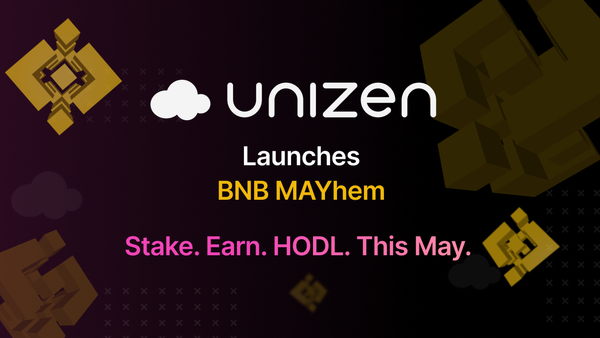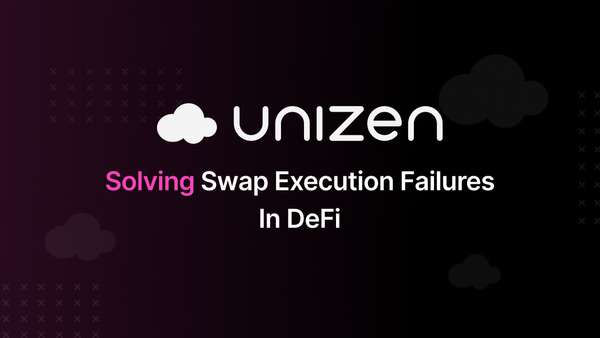Can You Mine Bitcoin on Your Phone?
Can you mine Bitcoin on your phone using a Bitcoin miner app? Learn the feasibility, how to go about it, and alternative methods you can consider.
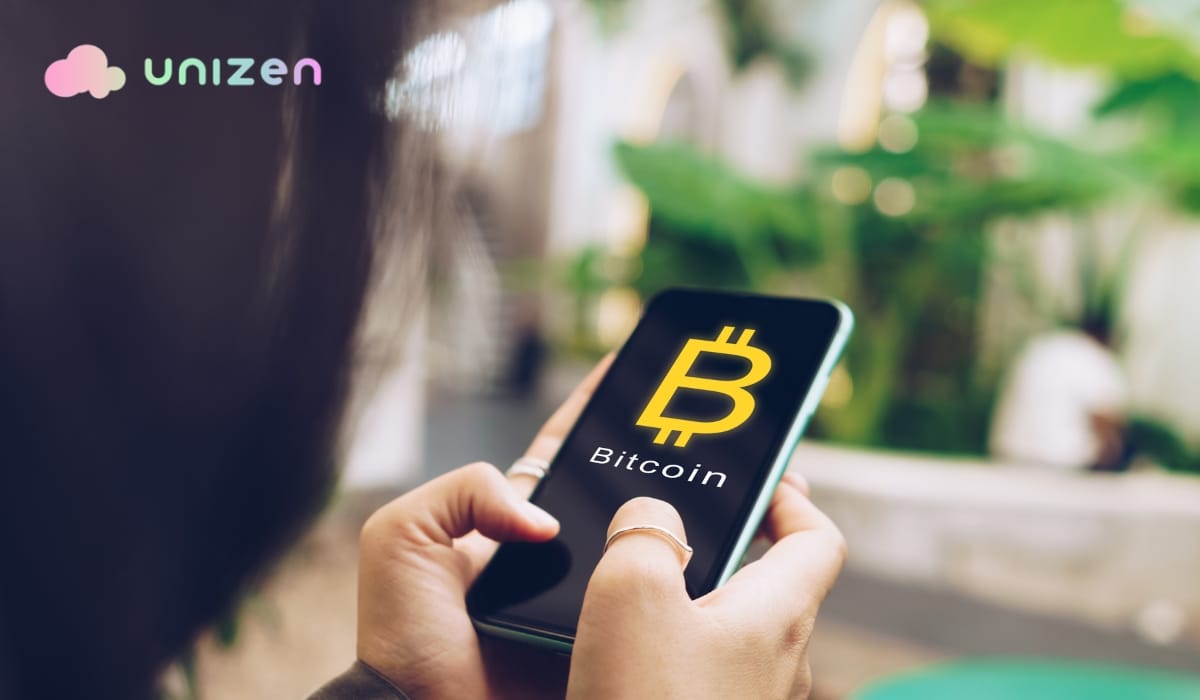
Mining Bitcoins has been lucrative for years, which means joining the moving train. Hence, the famous question: Can you mine Bitcoin on your phone? To which the answer is: Yes, you can mine Bitcoin on your phone, especially with apps available on the Google Play store or IOS. Traditionally, Bitcoin mining requires high-powered computers with high-end graphics cards or application-specific integrated circuits (ASICs) that have immense computational abilities and consume lots of electricity. This level of resources and energy expenditure needs to be utilized to verify Bitcoin transactions, solve complex cryptographic puzzles, and yield new bitcoins as a reward. However, this has made mainstream Bitcoin mining challenging.
Mobile mining has emerged as a potential way to make cryptocurrency mining more accessible to average users. Harnessing the processing power of smartphones, which millions already own, could help decentralize the Bitcoin network through innovative mining apps for smartphones. While phones offer limited capabilities compared to dedicated mining rigs, their convenient size and portability provide advantages for a mobile crypto miner. Mining software allows for aggregating the mining output of many phones, similar to cloud or pooled mining on PCs, to provide user mining solutions. If power efficiency improves, cloud mining may become a more popular method for individuals to mine Bitcoin.
In the future, cloud mining may become a more popular method for individuals to mine Bitcoin on Android and iPhones. Phones may progressively contribute meaningful hashes to the blockchain in an energy-efficient way wherever their users take them, making it possible to mine Bitcoin on the go. For now, core challenges remain around developing optimized protocols balancing usability, performance, and energy use for mining applications on Android phones or iPhones. However, mobile mining promises to bring more people and mining points into the global Bitcoin network.
Feasibility of Mining on Smartphones Can Be Used in Crypto Mining Apps To Increase Their Hashrate
Mobile crypto mining using smartphones is possible because smartphones contain CPUs and GPUs that can contribute processing power to cryptocurrency networks, even on a smaller scale than specialized miners. When a mobile mining app runs in the background, it directs a smartphone's spare processing resources, like the CPU, toward validating blockchain transactions and earning fractional amounts of digital currencies. Popular coins mined on phones include Bitcoin, Monero, and newer cryptocurrencies designed for smartphones like Pi Network that use proof-of-stake consensus, requiring less processing power than proof-of-work algorithms.
While smartphone mining yields are tiny compared to dedicated ASIC hardware suited for mining, millions of individual smartphones collectively contributing spare resources can still significantly increase the decentralization of cryptocurrency networks. Mobile mining lowers the barrier to entry for participation in blockchain security by allowing anyone with an idle Android phone to opt in. This helps cryptocurrencies achieve wider distribution and censorship resistance even in areas where access to high-powered desktop computers for mining may be limited, making cloud mining an attractive alternative. Apps also allow browsers to mine cryptos, extending participation opportunities further.
The Impracticality and Inefficiency of Mining Bitcoin Directly on Phone
Mobile phones are highly unsuitable platforms to directly mine Bitcoins owing to the simplicity of the processing capability and high energy use that the proof-of-work algorithm demands from Bitcoin. Smartphones lack the raw computing power necessary to compete effectively with the specialized ASIC miners explicitly intended for Bitcoin mining. The processing units in phones pale compared to the robust application-specific integrated circuits (ASICs) used by professional miners. Even cutting-edge smartphone CPUs and GPUs are over a hundred times less powerful than modern ASICs, typically used in serious Bitcoin cloud mining operations. This massive processing deficit means phones would have meager theoretical hash rates, validating only a tiny fraction of blocks, while the energy spent would far outweigh the meager rewards earned.
In addition, Bitcoin mining requires vast amounts of sustained computational effort to solve the computationally intensive cryptographic puzzles underlying its proof-of-work security model, which can be impacted by mining difficulty. This has spurred an arms race toward ever-more efficient ASICs that maximize the hashes per watt. In contrast, phones must balance performance with thermal and power constraints to avoid overheating and rapidly draining batteries under heavy load while trying to mine BTC. Spending significant CPU cycles continuously mining Bitcoin would quickly drain phone batteries, destroying efficiency and shortening hardware lifespans. The heat output could also throttle processors and damage components over time. These engineering challenges and high energy costs relative to rewards make directly mining Bitcoin with phones impractical compared to mining altcoins with less demanding protocols, which are often found in various Android apps.
Challenges and Limitations
Here are the key challenges and limitations of mining cryptocurrencies using smartphones:
Processing Power
Smartphones are known to have mobile system-on-chips (SoCs)—systems on chips like Snapdragon or Exynos that integrate the CPU, GPU, and other components. While capable of everyday tasks, they lack the specialized cryptographic extensions found in specialized mining computers. Due to optimized architectures, ASICs can achieve over 1000x higher hash rates, significantly improving the chances of receiving rewards from mining. Additionally, phone CPUs have limited cores (usually 2-8) compared to mining rigs with dozens of high-powered GPUs.
Device Lifespan
Intensive mining 24/7 would rapidly drain batteries in a couple of hours and cause overheating from prolonged peak CPU usage, making it unsuitable for Android or iPhone devices. This thermal load can permanently degrade phone components much faster than their typical lifespan of 2-3 years. Mining rigs instead employ redundant power supplies, cooling systems like fans, and heatsinks to run components near their limits non-stop for years.
Profitability
Estimates show phone hash rates would average a few hundred hashes per second, whereas specialized mining computers can do trillions, making it less efficient to mine BTC with a phone. In today's difficulties, phones can expect fractional cents per day rewards, whereas dedicated miners earn dollars daily. With electricity costs also factored in, returns are unlikely to offset mining rewards halving every few years as networks grow exponentially.
Network Competition
Blockchains like Bitcoin collectively secure trillions of dollars in value, making it essential to learn how to mine Bitcoin effectively. With cutting-edge mining hardware constantly innovating, mining apps for Android and iPhone could enhance the efficiency of smartphone mining and provide mining opportunities for digital assets. Standalone phones are no match for optimized data centers housing thousands of the highest-performing ASICs. The computational advantage of specialized rigs versus phones effectively precludes any realistic chances of solo mining success.
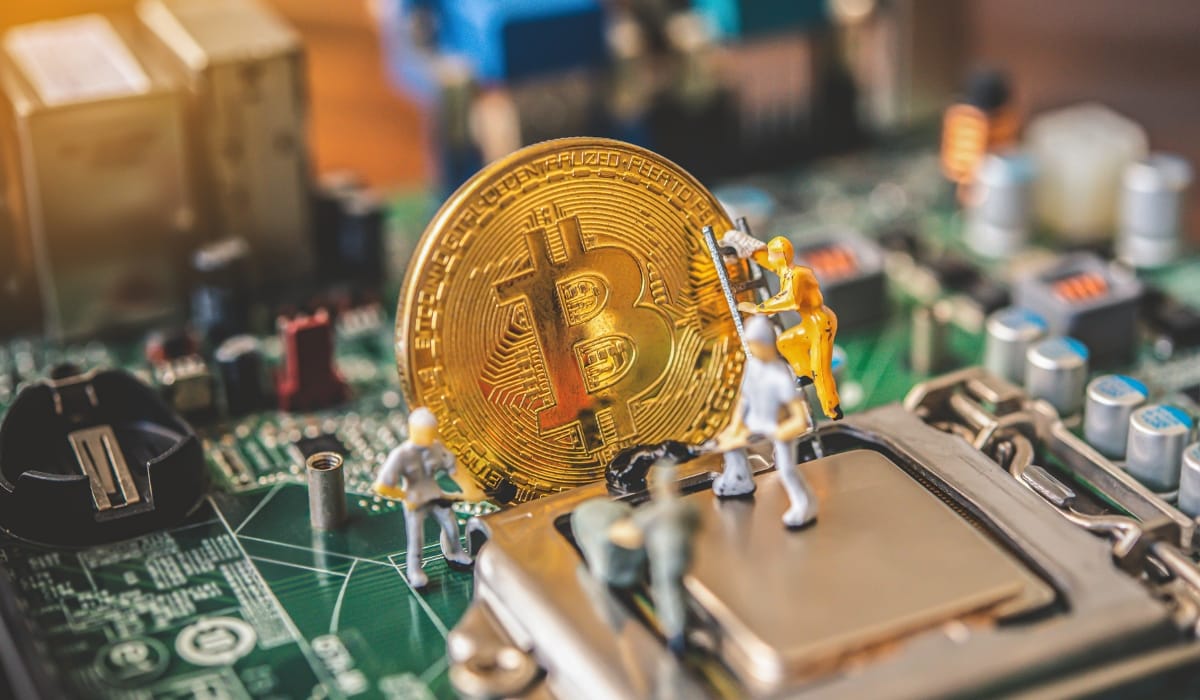
Environmental Impacts of Bitcoin Phone Mining
Here are the environmental impacts of mining bitcoin on your phone:
Energy Consumption
Traditional mining uses vast amounts of electricity, running banks of specialized ASIC miners 24/7. A single top-end mining rig can use over 3,000 watts. With mobile mining, phones may opportunistically mine when idle and unplugged using just a few watts. Bitcoin mining globally is estimated to use 150+ TWh per year, more than some countries, highlighting the need for more sustainable mining operations in 2024. Mobile mining uses a tiny fraction due to phones being low-powered. Mining on 1000 phones would use the same energy as 1-2 top mining rigs.
E-waste and Manufacturing
Traditional ASIC miners have a very short lifespan of 1-2 years before becoming obsolete. When replaced, they add to e-waste quantities. Mobile phones may last 4+ years before upgrading, but remember that mining can affect their longevity. Manufacturing mining rigs requires additional resource extraction and production over mobile phones, which are already being made for communication purposes. This adds impacts from rare earth metal mining, smelting, circuit board production, plastic components, and the environmental costs of mining operations.
Infrastructure & Space Requirements for Mining Operations
Industrial-scale mining farms need specially cooled warehouses and constant power/network infrastructure. By comparison, mobile mining infrastructure is negligible, utilizing existing networks and small amounts of server space. The large physical footprint of mining rig arrays contrasts with mobile mining, which utilizes small existing devices wherever its users are located with virtually no new infrastructure required.
Alternatives and Considerations
Here are some alternatives and considerations regarding mining cryptocurrencies using smartphones:
Mobile Monitoring Apps
Enable users to supervise the status of personalized desktops/ servers for mining using their smartphones to improve specialized mining contracts. These include hash rates, the amount of reward that has been received over days or weeks, and the performance of the equipment. This is useful for miners who require occasional on-the-go access to their mining operations for repairs, say, after some time. It offers cryptocurrency access without straining the mobile phone capabilities, enhancing the mining experience. Monitoring also helps to reduce wear down from intensive mining processes directly on the devices, and thus, practical mining work is done while ensuring battery life is maintained. It extends the life span and functionality of smartphones for everyday use.
Security Risks
Applications providing mobile mining services can be a threat. They may harm the phone by amplifying access to features such as a camera, microphone, contacts, etc., so it is unsafe to mine crypto on your phone. This data could be misused or sold to third parties. Some apps offer unwanted adware, toolbars, or crypto-mining software that takes control of resources without permission. Some may have concealed payloads, such as keyloggers, deployed to target users’ cryptocurrency wallets and other accounts. Frauds may include pump-and-dump schemes or claims of explosive gains that are merely illusions. Given this, users are even required to make sure of app developers and access warning signs. Personal phones are considered vulnerable targets for exploitation because they contain private data. Knobs such as automatic app updates make security measures always up to date.
Pooled Mining
Like many other people with phones, they could join a large mining pool to which they would contribute little regarding hash power. In pools, dedicated ASIC machines contribute much more hashing power—phones may end up mining fractions of a coin. At the same time, net incentives for individuals are relatively small when grossing up energy costs.
Mining Altcoins Crypto on Your Phone
Currencies with less competitive networks than Bitcoin may be able to provide slightly better returns for phones engaging in mining features. It’s conceivable that a more ‘primitive’ variety of digital coins for which proof-of-work entails lesser computation may be more plausible targets. However, profit is continuously variable and depends on the demand of the market and the price of the specific coin mined; Unizen can assist you with such data to optimize your mining plan. When it comes to numerous altcoins, many of them turn into nothingness. Unlike the conventional setup, Phones are also unsuitable for desktop GPU mining. However, sustained market sustainability is crucial for steady profitability in mining cryptocurrency on any phone, anywhere.
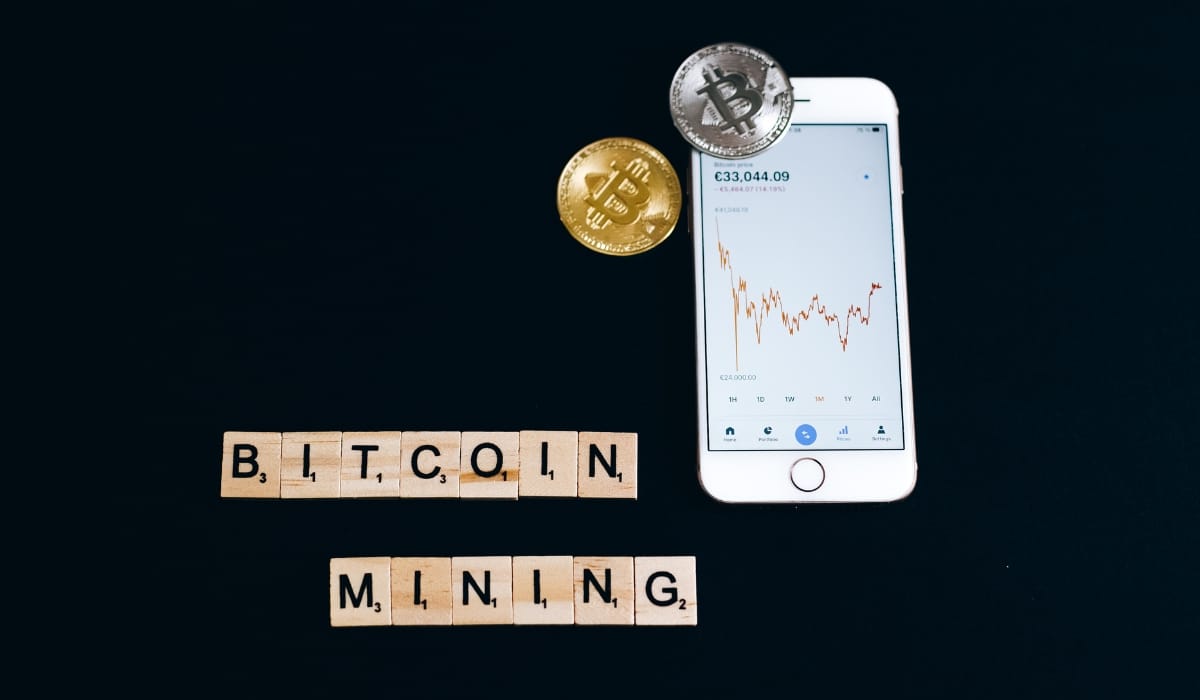
How to Mine Bitcoin on Your iPhone
There is the question, can you mine Bitcoin on your phone? While iPhones have less powerful hardware than computers, mining apps on the iOS App Store allow users to participate in Bitcoin and cryptocurrency mining directly from their iPhones. These apps will enable you to mine cryptocurrency passively through your phone by interfacing with dedicated server equipment that remotely performs the crypto-mining process. This allows iPhone users to potentially earn small rewards from their spare processing power without needing specialist hardware.
One of the most important considerations when choosing a mobile mining app is verifying its legitimacy and reputation, given the potential for scams in the crypto space. Ensuring the developer and mining pools/algorithms used are reputable helps avoid potential issues down the line.
There are a few key reasons why choosing a legitimate and reputable mobile mining app is important. Scams have been known to occur in the cryptocurrency space, where some rogue apps may mislead users about earnings potential or even secretly divert any mining profits without actually performing any mining. Without transparency regarding who developed the app and what mining pools and algorithms it utilizes, personal data or funds can be at risk when using crypto mining apps without proper security measures and being compromised.
Opting for apps that identifiable teams have developed, providing verifiable mining details and partnerships, and having real user reviews and validating experiences helps ensure the mining activity and rewards are truly occurring as intended for the user rather than being subject to potential misappropriation or fraudulent behavior. Reputation provides valuable assurance that the App operates legitimately and puts users' interests first.
Steps to Mine Bitcoin on an iPhone
Here are the steps to mine Bitcoin on an iPhone with more details:
Step 1: Select a Mining App
Research mining app options by reading reviews from trusted sources. Choose an app from a reputable developer that is optimized for iOS and allows you to join mining pools. Popular apps must include a user-friendly interface and allow you to mine various cryptocurrencies together in a pool.
Step 2: Install and Set Up the downloaded App
Download the selected App from the Apple App Store. During installation, review the permission requests and agreements carefully. Open the App and create a secure wallet/account with strong passwords. To start mining effectively, configure the mining intensity and algorithms based on your iPhone's hardware to optimize the ability to mine Bitcoin using mobile devices. Adjust details like which coins to mine and payment thresholds available in Unizen in your mining application, keeping in mind that mining settings can greatly affect profitability.
Step 3: Join a Mining Pool
Actively mining alone on the phone is typically unprofitable. Join a pool to combine hashing power and receive regular payouts based on your contributed shares. Understand the pool's fee structure and payout thresholds/schedules before using any Bitcoin miner app. Set your wallet address on the crypto exchange so the pool can send earned coins from combined mining efforts, making it possible to mine various cryptocurrencies.
Step 4: Monitor and Manage Mining Operations
Check the App regularly to view the current hashing speed, coins mined, and pending/received rewards. Monitor iPhone temperature and performance impacts. Change settings or take breaks if the Android device gets hot. Troubleshoot any issues promptly. Transfer earned coins from the app wallet to a secure personal crypto wallet for easy trade on Unizen when balances become meaningful, especially if you use a mobile device for crypto mining.
Future of Mining Bitcoin on Your Smartphone
Considering the challenges of answering the frequent question, "Can you mine Bitcoin on your phone?" The future will be bright for phone miners participating in cryptocurrency mining pools. One of them is the question of thermodynamics in mining bitcoins using a phone. The use of algorithms required for crypto mining must be run constantly to obtain rewards for their provisions, which require lots of energy and produce a lot of heat— far beyond the processor capability of any smartphone to handle without overheating or excessive battery drain. BTC mining could be pretty demanding. Phone hardware is also not designed to ensure the processing speed required for artificial intelligence.
Still, breakthroughs in energy-efficient semiconductors, distributed computing architectures, and localized renewable energy sources may offset these thermal and power limitations. For instance, sophisticated networks of modules for cryptocurrency mining are embedded in the design of new-generation Android phones and rely on solar energy. Cloud and edge computing models may enable phones to donate unused processing power to mining in a distributed network. The incentives for such “loaned” cycles could include fines in the form of a fraction of a Bitcoin. However, as of now, individual hash rates are low, which means the returns for individual phones are meager.
Regulatory challenges are also hurdles since some regions may ban message mining from phones for commercial purposes, citing high power consumption. Operators had to substantiate energy efficiency and thermal management to meet the standards. In the future, when 5G networks are in place, and localized concentrated solar energy and micro solar roofs are standard, phones will supplement the specialized modular mining hardware integrated into harmonic distributed networks. However, there are inherent challenges in exclusively phone mining; the future models of incorporating efficient module mining peripheries into smartphones and renewable microgrid networks may suggest a way for localized inclusion in mining Bitcoin blockchain through contributed computation. Significant changes would require new technologies to be developed initially.
Conclusion and Considerations
Consequently, mining cryptocurrencies on smartphones is not without limitations. The capability of phone hardware to mine Bitcoin through a smartphone typically falls below that of specialized mining rigs regarding raw computing and energy utilization. Thus, the ability to make money through mining cryptocurrency is relatively low compared to the invested time. Security and privacy aspects cannot be left unnoticed as well. The mining of apps implies the availability of apps and permission levels that enhance visibility. Most apps do not implement best practices or even have their users' ultimate welfare as a priority.
Apprehending the potential disadvantages or other concealed cost implications of the mining work, it would be wise to dedicate enough time and effort to do independent research on smartphone mining software beforehand. However, it might not be the most efficient way for a regular user to engage in the decentralized cryptocurrency markets, such as mining right on an iPhone. Precaution and prudence when choosing the app can sometimes result in specific undesirable outcomes, especially when searching for options on how to mine crypto on your phone.

